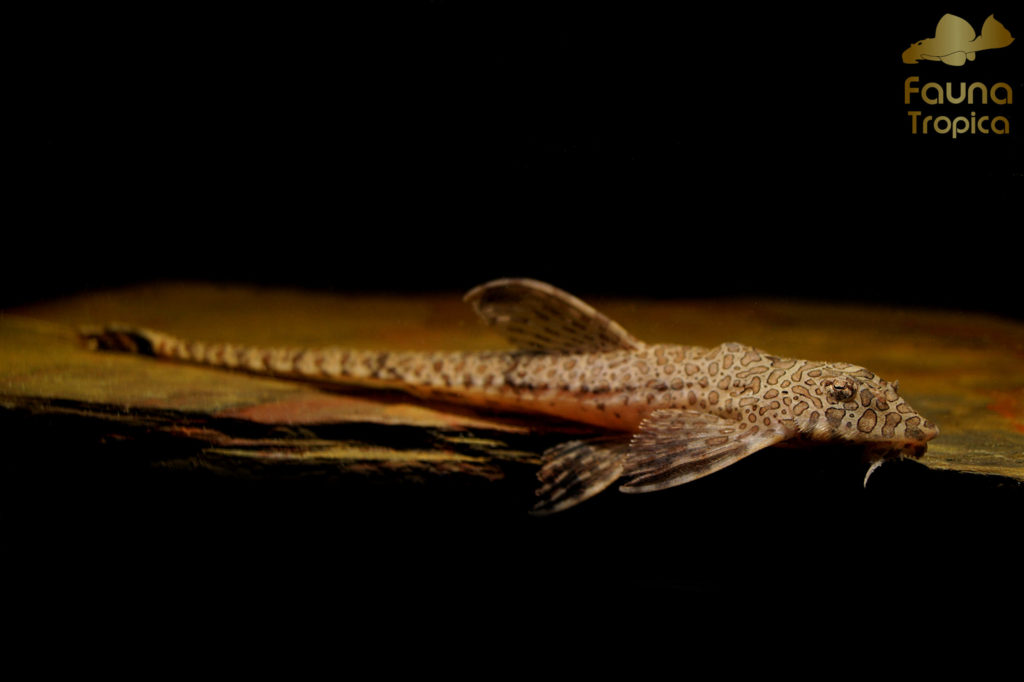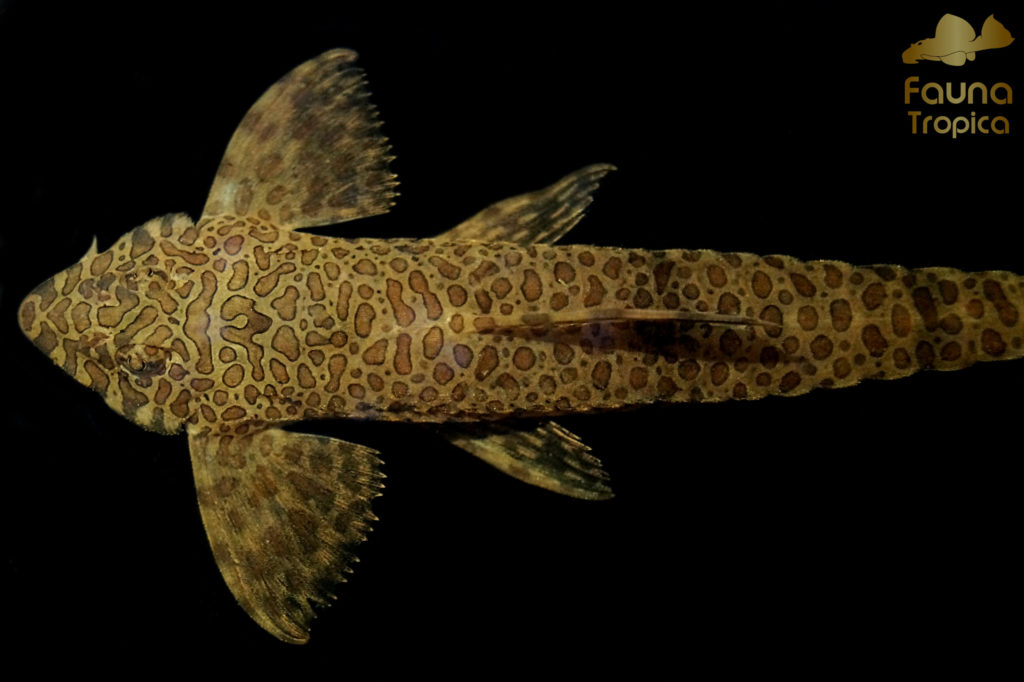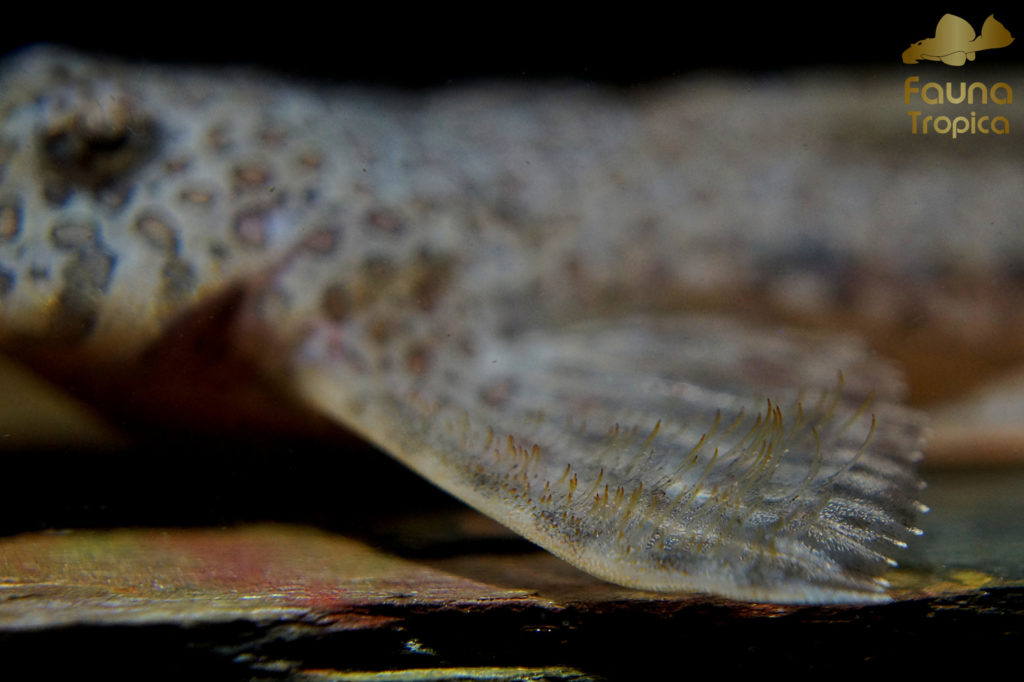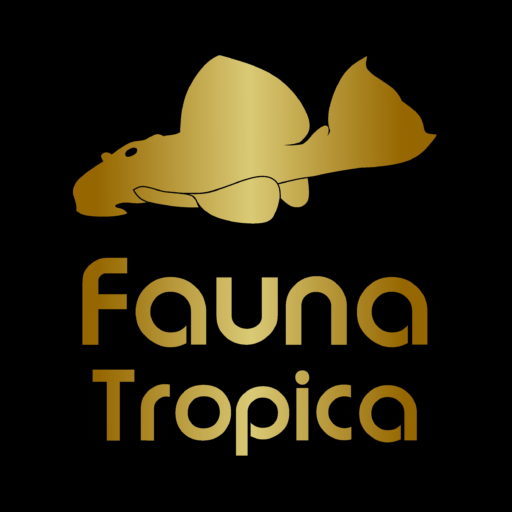
Scientific name: Rineloricaria melini
Origin: South America / Brazil / Rio Negro ~ Rio Solimões
Maximum length: 12 – 13 cm
Temperature: 24 – 29 ºC
Diet: Omnivore
- Taxonomy
- Description
- Disribution and habitat
- Diet
- Aquarium
- Sex difference
- Reproduction and breeding
Order: Siluriformes
Suborder: Loricarioidei
Family: Loricariidae
Subfamily: Loricariinae
Genus: Rineloricaria
Species: Rineloricaria melini, Schindler, 1959
Rineloricaria melini is a small species of the family Loricariinae. With about 12 - 13 cm this species is grown out and therefore a perfect fish for smaller tanks.
It has a filigree body structure.
Its overall body coloration is white to beige, and over the whole body R. melini shows a beautiful brown dotted pattern. A dotted pattern can also be seen on the rest of the fins. The tail fin is dark brown to black. When stressed, this species shows a striped pattern on the long tail. While females are smooth on the body, males show odontodes, especially on the head and the pectoral fins.

This species prefers to sit on open spaces in the sand. R. melini is a peaceful fish, which doesn't show aggression's towards other fishes or its own.
Rineloricaria melini is also known under the synonym Hemiloricaria melini.
This species is found in the Manacapuru - area of Brazil, where Rio Solimões and Rio Negro come together. Therefore you can find this species in black- and white water. The water there has a temperature of around 24 - 29 °C and shows a low pH.
This species does not occur in very strong currents, and it prefers sand or small gravel as a substrate.
Rineloricaria melini is omnivorous. In nature it feeds mostly from insect larvae and other small invertebrates. Additional greens, like algae are also eaten.
In captivity you can feed this species with almost every available food. For example granules, frozen food and even live food, also zucchini slices can be given. It should only be taken care that it gets enough proteins.
We prefer to feed them with granules like Insect soft granulaat or green food like Dr. Bassleer Biofish Food Green and Spirulina soft granulate.
Since this species remains fairly small, it is possible to keep a group in a aquarium with 100 cm length.
Sand as a substrate and hiding spots, in form of open, thin tubes, wood and stones, are very welcomed by R. melini. This species likes warm and acidic water. The best is to keep them around 27 °C and with a pH of 4,5 - 6,5. These parameters are possible to reach with peat, catappa leaves or alder cones. The tannins in those nature products tint the water brownish and drop the pH in the water.
A slight current, an air stone and dimmed light help the fish to feel comfortable.
This fish doesn't show territorial aggression towards its own kind and is also very peaceful to other fish. They are ideal to keep in small groups of 5 - 10 specimens.
It should be taken care, that they are not put together with big, carnivorous plecos or aggressive cichlids. They often get skin damages from too aggressive tank mates, since they don't always flee in danger. Mostly they hide in the substrate at danger.
This species doesn't have a sexual dimorphism in the size or in coloration. The only easy way to sex R. melini is during the breeding time, when males develop odontodes on the head, the gills and the pectoral fins.

This species is a cave breeder. Different than plecos, they prefer to spawn in open caves with a tubular shape. Therefore the tubes are perfect caves for this species.
The eggs of R. melini are green. Similar with most Loricariidae, the male protects and takes care of the eggs.
To get R. melini into breeding mood, a very low pH and regular water changes are necessary. Females show quickly a fat belly, full of green eggs. Sometimes the eggs are even visible through the skin of the belly.
